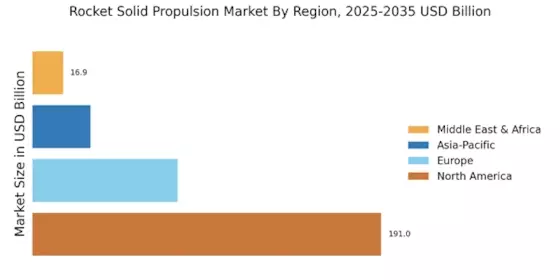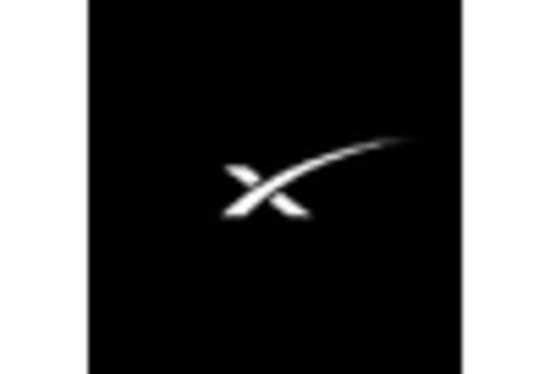Commercial Launch Services Expansion
The Rocket Solid Propulsion Market is benefiting from the expansion of commercial launch services. With the increasing number of satellite deployments and the rise of small satellite constellations, the demand for reliable and cost-effective launch solutions is on the rise. Companies like SpaceX and Rocket Lab are leading the charge, utilizing solid propulsion systems for their launch vehicles. The market for commercial launch services is projected to grow significantly, with estimates suggesting it could reach USD 30 billion by 2030. This growth is likely to create a favorable environment for solid propulsion technologies, as they are essential for meeting the demands of frequent and reliable launches. The competitive landscape is evolving, with new entrants seeking to capitalize on this burgeoning market.
Growing Demand for Space Exploration
The Rocket Solid Propulsion Market is experiencing a surge in demand driven by the increasing interest in space exploration. Governments and private entities are investing heavily in missions to the Moon, Mars, and beyond. For instance, the Artemis program aims to return humans to the Moon by 2024, which necessitates reliable propulsion systems. This trend is reflected in the projected growth of the market, which is expected to reach USD 5 billion by 2027. The need for robust solid propulsion systems is paramount, as they provide the necessary thrust and reliability for launching payloads into space. As more nations and companies enter the space race, the demand for advanced solid propulsion technologies is likely to escalate, further propelling the market forward.
Regulatory Support and Policy Initiatives
The Rocket Solid Propulsion Market is also influenced by favorable regulatory support and policy initiatives aimed at promoting space activities. Governments are increasingly recognizing the strategic importance of space exploration and are implementing policies that encourage investment in propulsion technologies. For instance, various countries are offering grants and incentives for research and development in solid propulsion systems. This supportive regulatory environment is expected to foster innovation and growth within the market. Additionally, international collaborations and agreements are being established to streamline the development and deployment of solid propulsion technologies. As a result, the market is likely to see increased participation from both established players and new entrants, further enhancing its growth prospects.
Military Applications and Defense Spending
The Rocket Solid Propulsion Market is significantly influenced by the rising defense budgets across various nations. Military applications of solid propulsion systems are expanding, particularly in missile technology and satellite launches. Countries are increasingly focusing on enhancing their defense capabilities, which has led to a notable increase in procurement of solid rocket motors. For example, the defense sector's investment in solid propulsion technologies is projected to grow at a CAGR of 6% over the next five years. This trend indicates a robust market for solid propulsion systems, as they are favored for their reliability and performance in critical defense applications. The ongoing geopolitical tensions further underscore the necessity for advanced propulsion systems, thereby driving the market's growth.
Technological Innovations in Propulsion Systems
The Rocket Solid Propulsion Market is witnessing rapid technological innovations that enhance the performance and efficiency of solid propulsion systems. Recent advancements in materials science and engineering have led to the development of lighter and more efficient propellants. These innovations not only improve thrust-to-weight ratios but also reduce costs associated with launches. The integration of smart technologies, such as real-time monitoring systems, is also becoming prevalent, allowing for better performance tracking and optimization. As a result, the market is expected to grow at a CAGR of 5.5% over the next decade, driven by these technological advancements. The continuous evolution of solid propulsion technologies is likely to attract new players and investments, further stimulating market dynamics.


















Leave a Comment